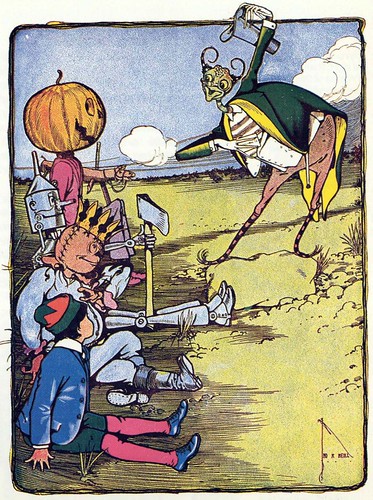 Robin: Tragedy and Triumph was DC Comics’s second volume of stories about Tim Drake, the fourth (or, by some counts, third) Robin. Editor Dennis O’Neil’s preface on the history of Batman sidekicks begins, somewhat self-congratulatorily, “The third time we got it right.”
Robin: Tragedy and Triumph was DC Comics’s second volume of stories about Tim Drake, the fourth (or, by some counts, third) Robin. Editor Dennis O’Neil’s preface on the history of Batman sidekicks begins, somewhat self-congratulatorily, “The third time we got it right.”
O’Neil writes with authority about the role of Robin in the early Batman comics, which I’ll analyze someday alongside my own “Reasons for Robin” series. Today the weekly Robin explores a path that O’Neil says DC didn’t take after the success of the New Teen Titans magazine of 1980 made Robin into the tail wagging the Batman dog.
As O’Neil told the story in 1993, the company decided Dick Grayson should become Nightwing. And as for a sidekick for Batman:
Gerry Conway began seeking a replacement.
Gerry was writing the Batman titles and he felt Robin was a necessary part of the saga. Or, if not Robin, maybe a new sidekick? Gerry suggested that Robin be retired and replaced by Raven, whom Gerry conceived as a black ghetto kid. It was a nifty idea, one that today might very well be adopted, but at the time Gerry’s superiors opted for tradition. They wanted nothing more or less than another Robin—fast.

The result was the first Jason Todd, basically a younger Dick Grayson with red hair—which was quickly dyed black. Other analyses suggest that DC didn’t dare make a big change because it had deals with too many licensees selling the traditional image of Robin as a white teenager with black hair and
no pants.
However, there are some inaccuracies in O’Neil’s history. He describes Jason Todd being invented after
Dick Grayson became Nightwing, but in fact the new boy appeared in the comics a year before, as Conway’s run on the
Batman and
Detective magazines culminated with the May 1983 issues.
It’s easy to spot why O’Neil was confused. In the early 1980s he was writing for Marvel (particularly
Daredevil and
Iron Man), so his knowledge of Robin-replacement conversations was secondhand at best. O’Neil returned to the Batman comics as editor in mid-1986, just in time to deal with the second Jason Todd.
Furthermore, there’s no way DC would have seriously considered giving Batman a sidekick named Raven in the 1980s. The company already had a major character using that name. That Raven was a linchpin of the same popular Titans team that was taking up Dick Grayson’s time. (Read
more about her at Titans Tower.)

So did Gerry Conway really propose the new team of “Batman and Raven”? It would be nice to resolve this mystery
Annie Hall-style by saying, “I happen to have Gerry Conway right here,” and pulling him out from behind a movie poster to resolve the questions.
Alas, when I raised the question through the
weekly Robin Twitter feed, @gerryconway’s quick and gracious reply was: “Hmm. Sounds like something I might have thought of, but I’m not 100% sure.” Which isn’t surprising. Conway’s been coming up with ideas for comics and other formats full-time since 1969. If a quarter-century ago one short-lived idea was “Batman and Raven,” he never had time to dwell on it.
My suspicion is that Conway did propose making Batman’s new sidekick a poor black kid as a way to do something
different, possibly even progressive, with the opening created by Dick Grayson‘s impending departure. The phrase “Batman and Raven” might have been a shorthand label for that idea—sounds like “Batman and Robin,” but
new.
I suspect O’Neil later heard of that idea during discussions of what to do with Jason Todd, who quickly lost popularity with readers in the late 1980s. Starting in the late 1970s, O’Neil had been part of the cohort that pushed DC into contemporary themes, along with
Neal Adams,
Marv Wolfman, Len Wein, and other young creators.
I suspect the “Batman and Raven” meme stuck in O’Neil’s mind as a slightly revolutionary road not taken. (Revolutionary for superhero comics of that time, that is.) And, knowing that that Raven could never fly, he shared the idea with readers in 1993 to encourage them to consider forgone possibilities.
NEXT WEEK:
Another time Robin was black—almost.
Over at Boston 1775, I’ve been exploring Road to Revolution!, a graphic novel for kids by Stan Mack and Susan Champlin published by Bloomsbury just in time for the new school year.


















 Looking for a middle-grade story starter? From historian Larry Cebula’s
Looking for a middle-grade story starter? From historian Larry Cebula’s 






